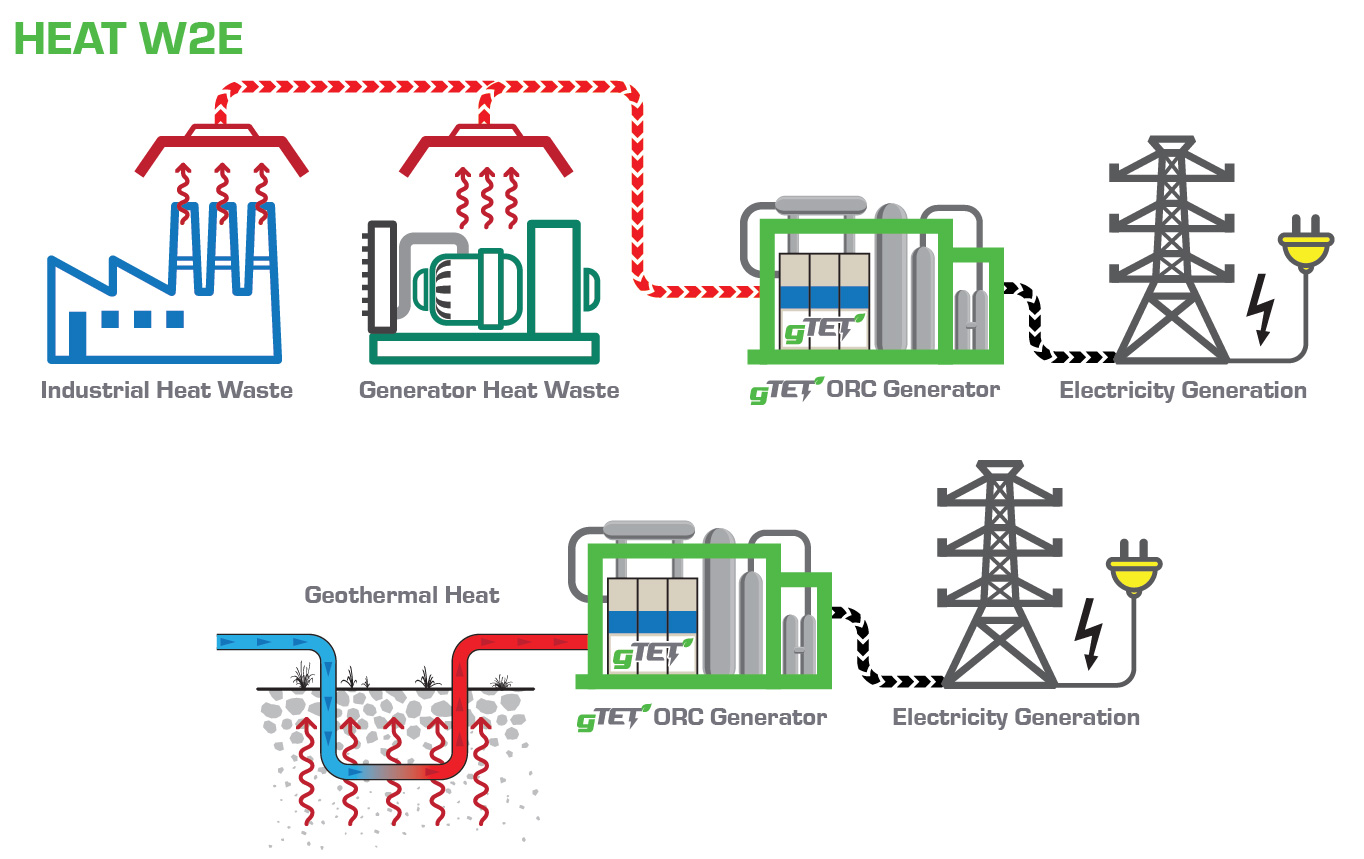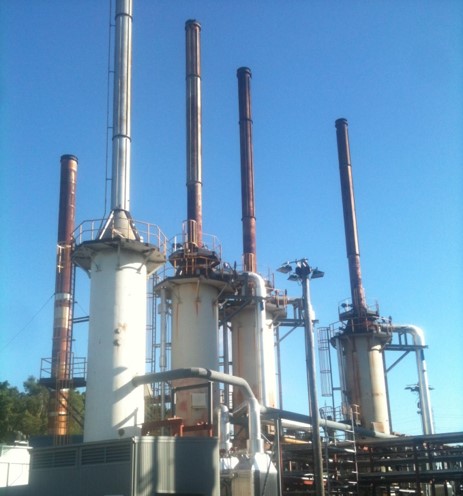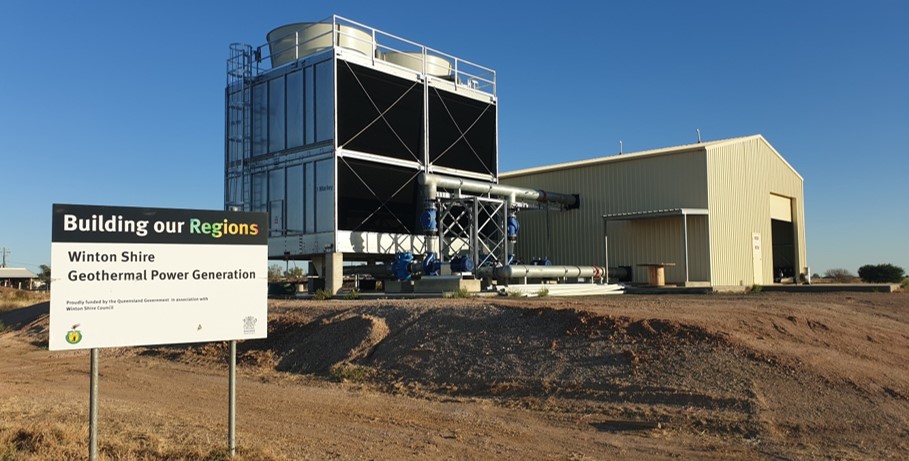
Heat Waste to Energy (W2E)
- The heat is transferred to the power generation system via a suitable fluid including steam, pressure hot water, glycol, thermal oil etc
- The heat is used for power generation using gTET’s revolutionary Organic Rankine Cycle (ORC) generator.
- Heat that can be demonstrably renewable based such as geothermal or solar thermal result in the power station being classified as ‘renewable power’
- If the site also requires heat e.g drying, the power station can also be configured as Combined Heat & Power (CHP) delivering low grade heat for other processes.
- The power stations are typically designed for minimal operating expense (OPEX) by avoiding regulated conditions such as full time manned high pressure steam turbine plants.

Case Studies

Heat W2E Case Study: Capstone Gas Turbine
Location:
Industry:
Source:
Thermal Process:
Power Generation
Economics:
Optimal
Power Generation
Capstone C1000 Exhaust
Gas turbine exhaust to exhaust to water heat exchanger then transferred to the ORC generator.
170kWe gTET ORC Generator with adiabatic cooling. None export power
Power generation estimates at $100kpa

Heat W2E Case Study: Koppers Minerals
Location:
Industry:
Source:
Thermal Process:
Power Generation
Economics:
Newcastle, NSW, Australia
Minerals
Industrial Exhaust Flue Gas
Exhaust gas to thermal oil heat exchange then transferred to the ORC generator.
170kWe gTET ORC Generator with water cooling. None export power
Power savings estimates at $50kpa

Heat W2E Case Study: Winton Geothermal
Location:
Industry:
Source:
Thermal Process:
Power Generation
Economics:
Winton, Queensland, Australia
Government
Geothermal-town water supply
86°C water from the Artesian Basin
2x 150kWe gTET ORC Generator with water cooling. Primarily export power
Power generation/ savings around $50k-$75k pa (depending upon water consumption) plus renewable energy credits.

